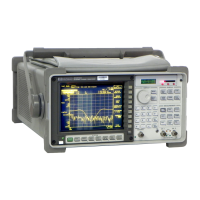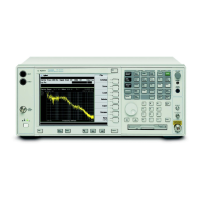The Synthesis Table
and Data Formats
The synthesis table contains data used by the analyzer for the synthesis
operation. It contains the pole and zero (or pole/residue or polynomial)
locations plus any gain, time delay, or scaling frequency parameters. The table
may contain data in one of the three commonly used formats:
• Pole-zero
• Pole-residue (partial fraction)
• Polynomial
You may change the data format in a synthesis table at any time by converting
the table to a different format. The Pole-Zero format is the most numerically
accurate of the three formats.
The Pole-Zero Format
For pole-zero data, the synthesis table is split into two columns: the left side for
poles and the right side for zeros. Poles (or zeros) can be either real or
complex conjugate pairs. (The requirement of conjugate pairs means that only
Hermitian symmetric pole-zero data is supported.)
Conjugate pair poles or zeros and real poles or zeros all occupy one line.
Often, real poles are called “simple poles” and real zeros are called “simple
zeros.”
Α±jΒ distinguishes a complex conjugate pair from a simple pole or zero which
has no imaginary part.
A table can have a maximum of 20 poles and 20 zeros. The order is not
critical. Any combination of real or complex pole-zero data can be in the table.
However, if every line contains a conjugate pair, the table is limited to a
maximum of 10 lines.
Agilent 35670A
Synthesis Option 1D3 Operator's Guide
15-4

